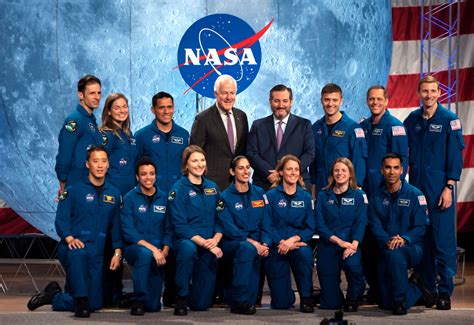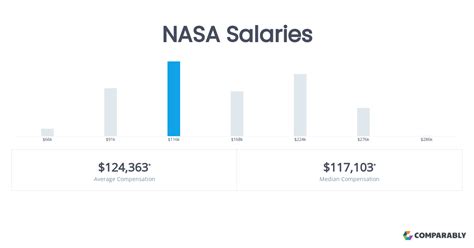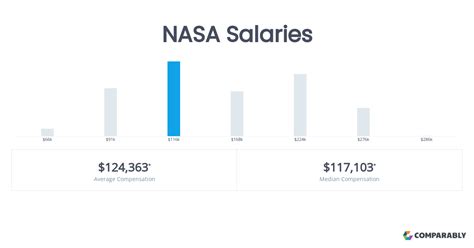Working for the National Aeronautics and Space Administration (NASA) is a dream for many, representing a unique opportunity to contribute to space exploration, scientific discovery, and technological innovation. Beyond the prestige and mission-driven work, a career at NASA offers competitive compensation and a clear path for advancement. So, how much do NASA employees actually make?
While salaries can range from approximately $70,000 for entry-level positions to over $183,500 for senior experts and managers, the reality is nuanced. This guide will break down NASA salaries, the key factors that determine pay, and what you can expect from a career at this legendary agency.
What Do NASA Employees Do?

There is no single "NASA employee" role. The agency is a massive organization employing a diverse range of professionals who collaborate to design, build, and execute missions in aeronautics and space. These roles can be broadly categorized into several key areas:
- Scientists: These are the researchers and explorers, including astrophysicists, planetary geologists, astrobiologists, and climate scientists who analyze data from missions like the James Webb Space Telescope and the Mars rovers.
- Engineers: The largest group at NASA, engineers are the builders and problem-solvers. This includes aerospace engineers who design spacecraft, software engineers who write mission-critical code, mechanical engineers who build hardware, and electrical engineers who design power and communication systems.
- Technicians: These skilled professionals are essential for hands-on work, from assembling and testing rocket components to maintaining the complex equipment at NASA's various centers.
- Administrative and Professional Staff: A large team works behind the scenes to keep the agency running, including roles in project management, finance, public communications, human resources, and procurement.
Average NASA Employee Salary

As a U.S. federal government agency, NASA's salary structure is primarily based on the General Schedule (GS) pay system. This is a standardized scale used across most federal agencies to ensure fair and consistent pay.
- According to FederalPay.org, which aggregates official government data, the average salary for a NASA employee in 2022 was $123,569.
- Reputable salary aggregators offer similar figures based on user-submitted data. Payscale reports an average base salary of approximately $112,000 per year, while Glassdoor lists an average total pay of around $118,000 per year.
A typical salary range for professional and scientific positions at NASA spans from the GS-7 level (entry-level) to the GS-15 level (senior expert or manager). A recent graduate might start at a GS-7 level, earning around $55,000 - $72,000 depending on their location, while a senior engineer or scientist at a GS-14 or GS-15 level could earn between $135,000 and $183,500+.
Key Factors That Influence Salary

Your specific salary at NASA is not arbitrary; it's determined by a transparent set of factors defined by the GS system.
###
Level of Education
Your educational attainment is a primary determinant of your starting GS grade.
- Bachelor's Degree: Graduates typically qualify for entry-level positions at the GS-5 or GS-7 grade.
- Master's Degree: An advanced degree often allows candidates to start at the GS-9 grade, immediately placing them at a higher salary tier.
- Ph.D.: A doctorate is often a requirement for research scientist positions and allows entry at the GS-11 grade or higher, reflecting the advanced expertise required for the role.
###
Years of Experience
Experience is recognized in two main ways. First, significant professional experience can qualify you for a higher starting GS grade. Second, once you are employed, experience dictates your progression through the "steps" within your GS grade. Each GS grade has 10 steps, and employees typically receive a step increase annually, representing a raise for sustained performance and experience. Promotion to a higher GS grade (e.g., from GS-12 to GS-13) requires meeting specific experience and performance benchmarks.
###
Geographic Location
NASA salaries are adjusted for the local cost of labor through a system called "Locality Pay." The base GS pay scale is increased by a specific percentage depending on the work location. This means an employee at a high-cost-of-living center will earn more than an employee with the same GS grade and step in a lower-cost area.
For example, the 2024 locality pay adjustment is:
- Houston, TX (Johnson Space Center): 34.54%
- Huntsville, AL (Marshall Space Flight Center): 20.08%
- Los Angeles, CA (Jet Propulsion Laboratory area): 35.98%
- Washington D.C. (NASA Headquarters): 33.26%
This ensures that take-home pay remains competitive regardless of where an employee is stationed.
###
Government vs. Private Sector (Contractors)
It is important to distinguish between direct NASA federal employees and contractors. Many professionals work on NASA projects but are employed by private aerospace companies like Boeing, Lockheed Martin, Northrop Grumman, or SpaceX.
- NASA Federal Employees: Paid on the GS scale, they receive robust federal benefits, including a pension plan (FERS), a retirement savings plan (TSP), strong job security, and comprehensive health insurance.
- NASA Contractors: Paid according to their company's market-based salary structure. In some high-demand fields like software engineering, contractor salaries may be higher than the GS equivalent. However, their benefits, retirement plans, and job security are determined by their private employer and can vary significantly.
###
Area of Specialization
Within NASA, certain career paths and specializations command higher salaries due to their complexity and demand.
- Aerospace Engineers and Computer Scientists: These roles are central to NASA's mission and are highly valued. Experienced engineers frequently reach the GS-13 to GS-15 levels.
- Research Scientists: Scientists with Ph.D.s who lead research projects or serve as principal investigators for missions are often at the highest end of the pay scale (GS-14 and GS-15).
- Project and Program Managers: Individuals with the technical and leadership skills to manage multi-million or multi-billion dollar projects are also among the agency's top earners, often holding GS-15 or Senior Executive Service (SES) positions.
Job Outlook

While the U.S. Bureau of Labor Statistics (BLS) does not track "NASA Employee" as a distinct profession, it provides projections for the core roles within the agency.
- Aerospace Engineers: The BLS projects a 6% growth in employment for aerospace engineers from 2022 to 2032, which is faster than the average for all occupations. This growth is driven by a focus on new aircraft and spacecraft for defense, exploration, and commercial use.
- Physicists and Astronomers: Employment for these scientists is projected to grow 7% from 2022 to 2032, also faster than average, fueled by continued federal investment in scientific research.
Competition for positions at NASA is famously intense, as the agency attracts top talent from around the world. However, the underlying demand for the skills NASA requires remains strong across the broader aerospace and research industries.
Conclusion

A career at NASA is both prestigious and professionally rewarding. While salaries may not always match the highest offers in the private tech sector, they are highly competitive and come with unparalleled job security, excellent federal benefits, and a structured path for advancement.
For prospective professionals and students, the key takeaways are:
- Salary is Transparent: Pay is determined by the structured GS system, not negotiation alone.
- Education and Experience Matter: Advanced degrees and relevant experience directly translate to a higher starting salary and faster career progression.
- Location Impacts Pay: Locality adjustments ensure fair compensation in different regions.
- The Mission is the Motivation: Ultimately, a career at NASA offers something beyond a paycheck—the chance to be part of humanity's greatest adventures.
